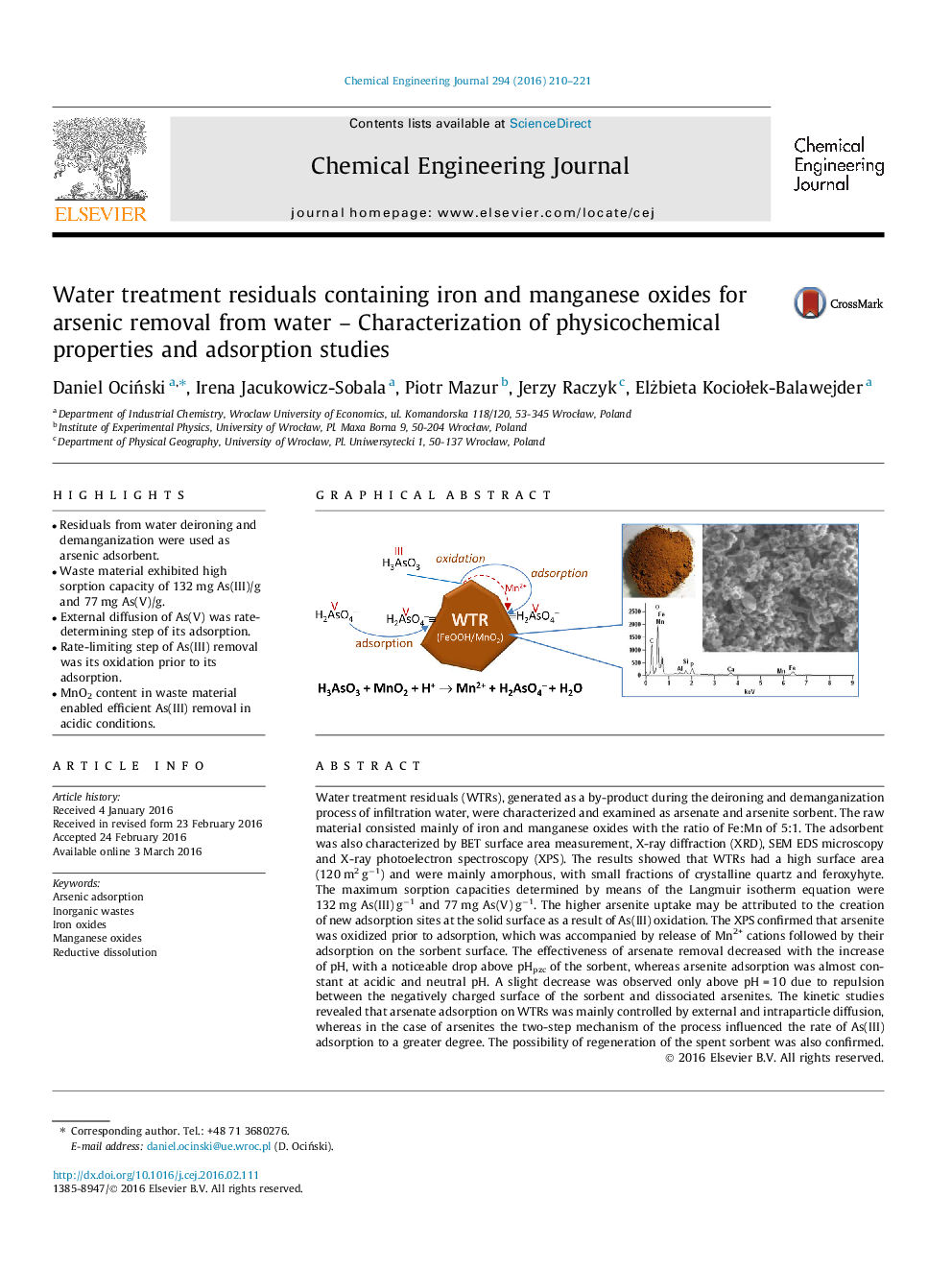| کد مقاله | کد نشریه | سال انتشار | مقاله انگلیسی | نسخه تمام متن |
|---|---|---|---|---|
| 145710 | 456349 | 2016 | 12 صفحه PDF | دانلود رایگان |
• Residuals from water deironing and demanganization were used as arsenic adsorbent.
• Waste material exhibited high sorption capacity of 132 mg As(III)/g and 77 mg As(V)/g.
• External diffusion of As(V) was rate-determining step of its adsorption.
• Rate-limiting step of As(III) removal was its oxidation prior to its adsorption.
• MnO2 content in waste material enabled efficient As(III) removal in acidic conditions.
Water treatment residuals (WTRs), generated as a by-product during the deironing and demanganization process of infiltration water, were characterized and examined as arsenate and arsenite sorbent. The raw material consisted mainly of iron and manganese oxides with the ratio of Fe:Mn of 5:1. The adsorbent was also characterized by BET surface area measurement, X-ray diffraction (XRD), SEM EDS microscopy and X-ray photoelectron spectroscopy (XPS). The results showed that WTRs had a high surface area (120 m2 g−1) and were mainly amorphous, with small fractions of crystalline quartz and feroxyhyte. The maximum sorption capacities determined by means of the Langmuir isotherm equation were 132 mg As(III) g−1 and 77 mg As(V) g−1. The higher arsenite uptake may be attributed to the creation of new adsorption sites at the solid surface as a result of As(III) oxidation. The XPS confirmed that arsenite was oxidized prior to adsorption, which was accompanied by release of Mn2+ cations followed by their adsorption on the sorbent surface. The effectiveness of arsenate removal decreased with the increase of pH, with a noticeable drop above pHpzc of the sorbent, whereas arsenite adsorption was almost constant at acidic and neutral pH. A slight decrease was observed only above pH = 10 due to repulsion between the negatively charged surface of the sorbent and dissociated arsenites. The kinetic studies revealed that arsenate adsorption on WTRs was mainly controlled by external and intraparticle diffusion, whereas in the case of arsenites the two-step mechanism of the process influenced the rate of As(III) adsorption to a greater degree. The possibility of regeneration of the spent sorbent was also confirmed.
Figure optionsDownload as PowerPoint slide
Journal: Chemical Engineering Journal - Volume 294, 15 June 2016, Pages 210–221
